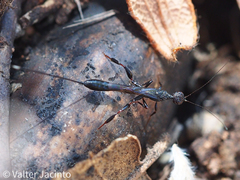Praying mantis
Mantodea
Mantodea, more commonly known as mantises, are an order of insects that are easily recognizable by their distinctive posture and forward-folded legs. In the Comunidad Valenciana, these fascinating creatures are often referred to as "Mantis Religiosa" or "Santa Teresa," which highlights their praying-like stance.
- Identification: Mantid insects are typically characterized by their triangular heads, large compound eyes, and elongated bodies. Their most striking feature is their raptorial front legs that are adapted for grasping prey.
- Ecological Role: These insects are primarily carnivorous and are well-known for their role as efficient predators in their habitats. They help control the population of various other insects, making them beneficial for gardens and crops.
- Behavior: Mantids are solitary creatures with excellent camouflage abilities, often matching the greens and browns of their natural surroundings. They are ambush predators, often remaining motionless to capture unsuspecting prey.
- Reproduction: The mating rituals of mantises are of significant interest because in some species, the female may eat the male after mating, a behavior that has intrigued and fascinated entomologists for years.
In Comunidad Valenciana, the presence of mantises can be observed particularly in regions with abundant foliage and insect activity, making them an integral part of the area's biodiversity. Their unique appearance and predatory behavior contribute significantly to maintaining ecological balance.







